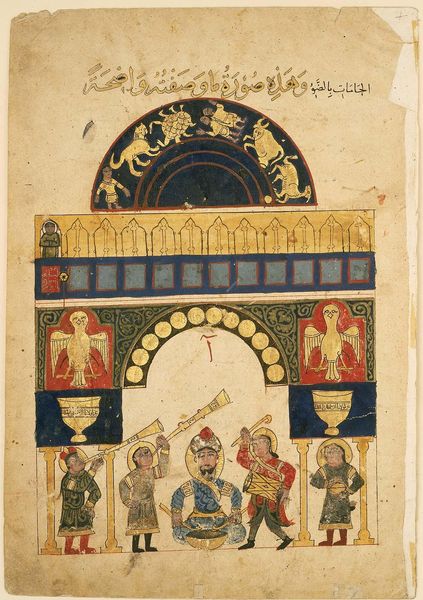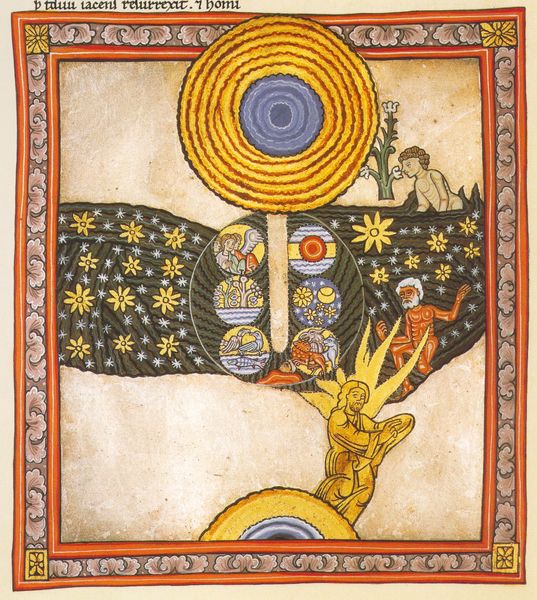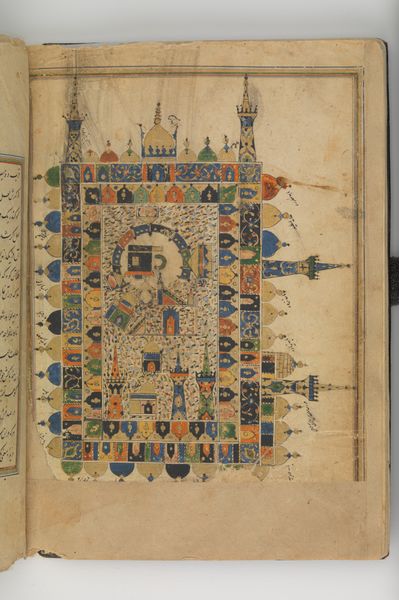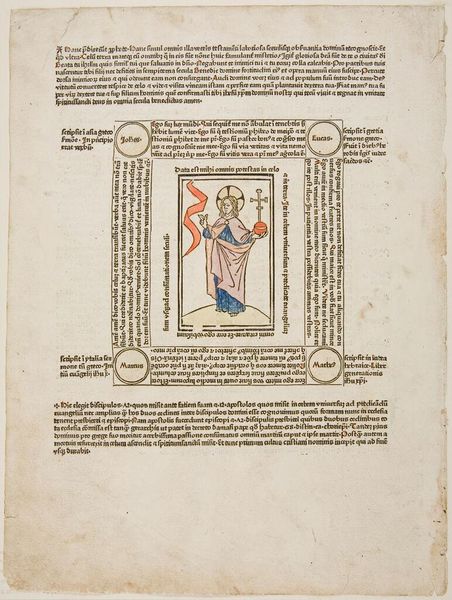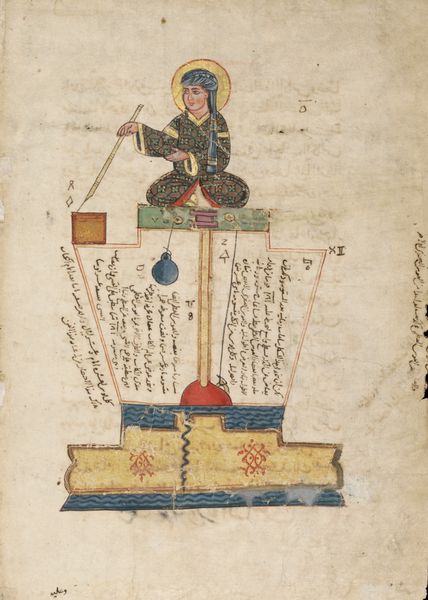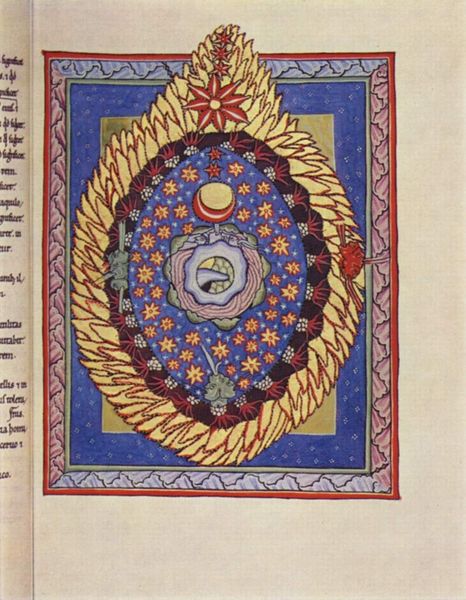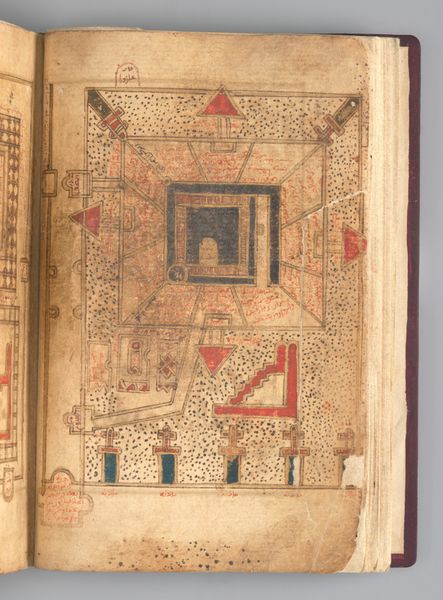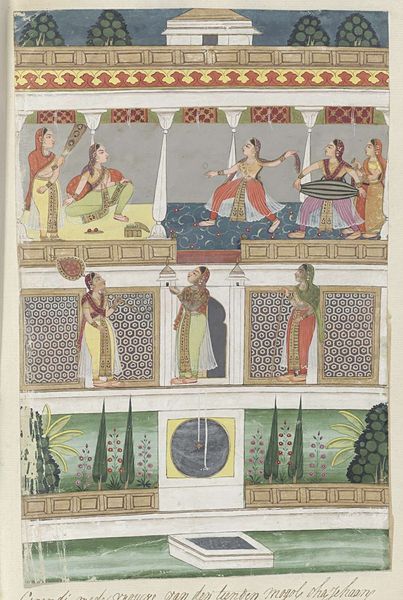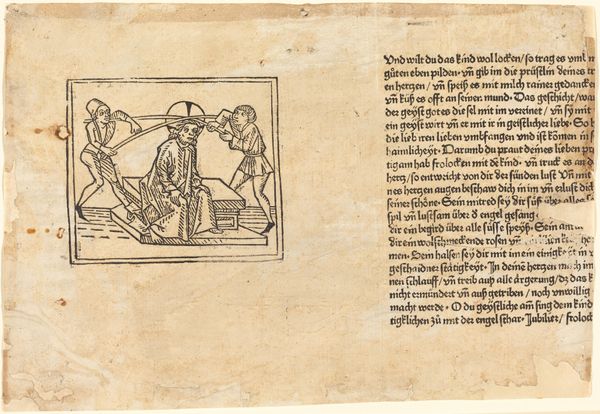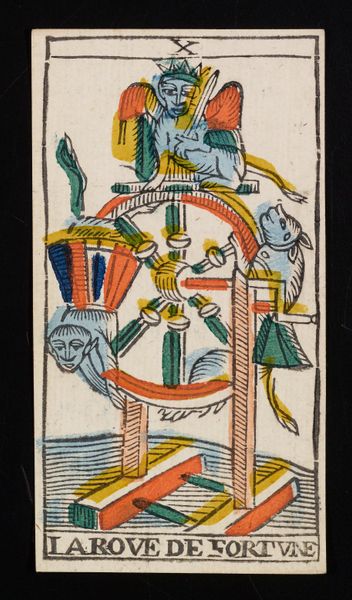
tempera, ink
#
medieval
#
water colours
#
narrative-art
#
tempera
#
figuration
#
romanesque
#
ink
#
coloured pencil
Copyright: Public domain
This is Ende’s illuminated manuscript of Belshazzar’s Feast, created around 975. The composition is structured by a strong architectural frame—striped semi-circular arch atop two vertical columns. This divides the scene into distinct registers, creating a clear hierarchy of space and meaning. Ende uses line and color to define forms, favoring symbolic representation over naturalistic depiction. The figures are stylized, flattened, and arranged in a way that emphasizes their symbolic roles rather than their physical presence. This deliberate distortion challenges conventional spatial logic, creating a world where symbolic meaning takes precedence. The limited palette of reds, blues, and yellows, applied with a deliberate lack of shading, underscores the artwork’s conceptual focus. The use of symmetry in the upper register is unsettled by the chaotic banquet scene below, heightening a sense of imbalance and unease, reminding us that art invites ongoing questioning and diverse interpretations.
Comments
No comments
Be the first to comment and join the conversation on the ultimate creative platform.
